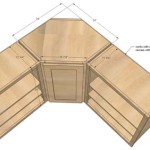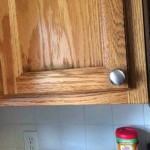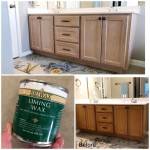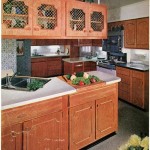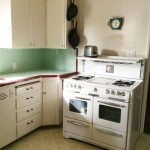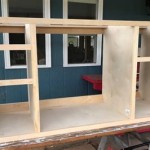Best Paint for Wood Veneer Kitchen Cabinets
Revamping your kitchen cabinets with a fresh coat of paint can dramatically transform the space, injecting new life and style. But when dealing with wood veneer cabinets, choosing the right paint is crucial for a successful and long-lasting finish. Wood veneer, a thin layer of wood glued to a less expensive core material, presents unique challenges for painting. Its delicate nature requires a paint specifically designed to adhere well and withstand the wear and tear of a busy kitchen environment. This article explores the best paint options for wood veneer kitchen cabinets, providing a comprehensive guide for homeowners embarking on this renovation project.
Understanding Wood Veneer
Wood veneer is a popular material in kitchen cabinetry due to its affordability and versatility. It offers the look and feel of solid wood at a fraction of the cost. However, its thinness requires a different approach to painting compared to solid wood. Unlike solid wood, which accepts paint readily, wood veneer can be more prone to chipping and peeling if not prepared and painted correctly. The thin veneer can also reveal the underlying core material if not painted carefully.
Choosing the Right Paint Type: Acrylic vs. Oil-Based
Two primary paint types are commonly used for kitchen cabinets: acrylic and oil-based. Both have their advantages and drawbacks, and the best choice depends on your specific needs and the condition of your cabinets.
Acrylic Latex Paint
Acrylic latex paints are water-based, offering several benefits for kitchen cabinets:
-
Easy Application:
Acrylic paints are generally easier to apply than oil-based paints, offering a smoother, more consistent finish. They dry quickly, allowing for faster project completion. -
Low VOCs:
Acrylic latex paints are low in volatile organic compounds (VOCs), making them a healthier choice for indoor use, especially in a space as frequently used as the kitchen. -
Clean Up:
Water-based acrylic paints are easily cleaned up with soap and water, making cleanup less messy and requiring fewer solvents. -
Durability:
Acrylic paints offer excellent durability, resisting stains and scratches, which is crucial for high-traffic areas like kitchens.
Oil-Based Paint
Oil-based paints, while offering a durable, high-gloss finish, have some drawbacks that make them less ideal for wood veneer cabinets:
-
Difficult Application:
Oil-based paints are more difficult to apply than acrylics, requiring more skill and precision. They take longer to dry, making the process more time-consuming. -
Strong Odor:
Oil-based paints have a strong odor, which can be a concern for indoor projects, especially in a space like the kitchen. -
Cleanup:
Oil-based paints require solvents for cleanup, which can be messy and harmful to the environment. -
Yellowing:
Over time, oil-based paints can yellow, potentially affecting the overall appearance of your cabinets.
For wood veneer cabinets,
acrylic latex paint is generally the recommended choice.
Its ease of application, low VOCs, and excellent durability make it suitable for achieving a professional-looking finish while minimizing potential issues. However, if you prefer the extra durability and gloss of an oil-based paint, ensure proper preparation and apply it with meticulous care to avoid any problems with the veneer's integrity.Priming for Optimal Adhesion
Priming is crucial for all types of wood veneer cabinets but especially important for those with problematic finishes. It creates a smooth, even surface for the paint to adhere to, preventing peeling and ensuring a long-lasting finish.
-
Adhesion Primer:
This type of primer is designed specifically to bond to difficult surfaces, including wood veneer. It helps ensure the paint adheres properly, preventing peeling and chipping. -
Stain-Blocking Primer:
This primer is ideal for cabinets with stains or discoloration, providing a barrier that prevents the stains from bleeding through the new paint layer. -
Sanding Primer:
This type of primer is applied after sanding the cabinets, filling in any imperfections and creating a smoother surface for a uniform paint finish.
Choose a primer compatible with your chosen paint type – acrylic latex primer for acrylic latex paint and oil-based primer for oil-based paint.
Preparation is Key
Proper preparation is essential for a successful paint job on wood veneer cabinets. Here are key steps to ensure optimal results:
-
Clean Thoroughly:
Clean the cabinets with a degreaser and a damp cloth to remove grime, grease, and any residue. Allow them to dry completely before proceeding. -
Sand Smoothly:
Sand the entire surface of the cabinets using fine-grit sandpaper to smooth out any imperfections and create a better surface for the paint to adhere to. Avoid sanding too aggressively, as it could damage the veneer. -
Fill Gaps and Cracks:
If your cabinets have any gaps or cracks, fill them with wood filler, allowing it to dry completely before sanding it smooth. -
Tape Off:
Use painter's tape to protect surrounding areas and ensure clean lines.
By following these preparation steps, you can create a surface conducive to a lasting and attractive paint finish on your wood veneer cabinets.
Painting Techniques for Success
Once your cabinets are properly prepared, you can move on to painting. Here are some tips for achieving a professional-looking finish:
-
Thin the Paint:
Thinning the paint slightly will allow for easier application and minimize brushstrokes. Follow the manufacturer's instructions for thinning ratio. -
Apply Thin Coats:
Instead of applying thick coats, use multiple thin coats, allowing each layer to dry completely before applying the next. This technique helps prevent drips and ensures the paint adheres evenly. -
Use the Right Tools:
Choose high-quality brushes or rollers specifically designed for painting cabinets. Use a smaller brush for detail work, and a roller for larger areas. -
Allow Drying Time:
Ensure ample drying time between coats. This allows for even drying and prevents problems like peeling or uneven finish. -
Avoid Overworking the Paint:
Once the paint is applied, avoid overworking or rubbing it, as this can cause streaks or mar the finish.
By applying these techniques, you can achieve a smooth, even, and professional-looking paint finish on your wood veneer kitchen cabinets.
Maintenance for Durability
Maintaining your newly painted wood veneer kitchen cabinets is crucial for preserving their beauty and longevity. Here are some tips for keeping them looking their best:
-
Regular Cleaning:
Wipe down your cabinets regularly with a damp cloth or a cleaning solution specifically designed for painted surfaces. Avoid harsh chemicals or abrasive cleaners, as they can damage the finish. -
Protect from Scratches:
Use pot holders or trivets to protect your cabinet surfaces from hot pots and pans. Avoid using sharp objects directly on the cabinet surfaces. -
Address Minor Damages Promptly:
If you notice any chips or scratches, address them quickly to prevent them from spreading. Use a touch-up kit designed for your paint to repair the damage.
By following these maintenance tips, you can ensure your painted veneer cabinets remain beautiful and functional for years to come.

8 Smart Steps To Painting Veneer Cabinets Spahn Rose Lumber Co

How To Paint Veneer Cabinets For A Long Lasting Finish Anika S Diy Life

How To Paint Veneer Cabinets For A Long Lasting Finish Anika S Diy Life

How To Paint Veneer Cabinets For A Long Lasting Finish Anika S Diy Life

How To Paint Pressed Wood Kitchen Cabinets Choice Cabinet

How To Paint Kitchen Cabinets In 7 Simple Steps

How To Paint Laminate Kitchen Cabinets Perfect Finish Tips

Should I Paint My Kitchen Cabinets Helix Painting

Refinishing Kitchen Cabinets Modern Refacing Made Easy Wisewood

The Best Type Of Paint For Kitchen Cabinets Shelfgenie


